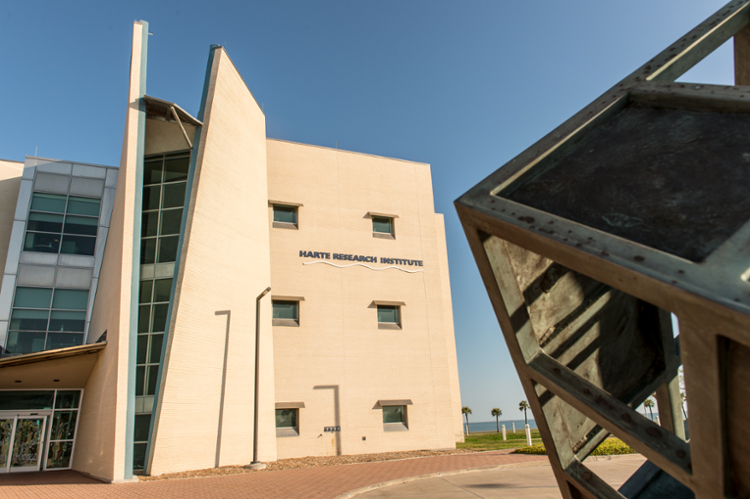TAMU-CC Hosts Workshop to Train Students How to Launch Ozonesondes
CORPUS CHRISTI, Texas – Under grey skies following a summer rainstorm, a group of students launched a large balloon into the atmosphere over Texas A&M University-Corpus Christi and watched it disappear from view. The academic exercise took place on July 7 in collaboration with NASA Dynamics and Chemistry of the Summer Stratosphere (DCOTSS) mission and was part of TAMU-CC’s ozonesonde workshop, held synchronously with other college campuses across the nation.
An ozonesonde is a lightweight device with a balloon attached to a conventional meteorological radiosonde, which according to the National Oceanic and Atmospheric Administration’s Global Monitoring Laboratory, is an instrument that measures ozone concentration at various altitudes. The radiosonde measures air temperature, pressure, and relative humidity, then transmits the ozone and weather data back to a ground receiving station.
The workshop was hosted by Dr. Chuntao Liu, TAMU-CC Associate Professor of Physical and Environmental Sciences, and led by Dr. Gary Morris, Professor of Environmental Science and Physics at St. Edward’s University in Austin. Participants included students from Texas A&M University in College Station, the Island University, and St. Edward’s.
“Basically, we are looking at influences of convective storms when they reach above the tropopause – which is the boundary between the troposphere and the stratosphere,” Liu said.
When convective storms, more commonly known as thunderstorms, reach the stratosphere, the storms can inject water vapor and influence the ozone layer, Liu explained. Thunderstorms carrying material beyond an unstable region of the atmosphere into a stratified, stable region can cause the gas species in the stratosphere to destroy ozone.
Up, up, and away
A group of student participants in the ozonesonde workshop led by Dr. Chuntao Liu, TAMU-CC Associate Professor of Physical and Environmental Sciences, and led by Dr. Gary Morris, Professor of Environmental Science and Physics at St Edward's University, watch as a balloon carrying an ozonesonde floats away during a session on July 8, 2021.
NASA plans to fly the aircraft ER-2 to measure gas species sent into the stratosphere in summer 2022 to add to the measurements it recorded this summer. However, in the meantime, students from four different universities, including the Island University, will help measure ozone concentration with ozonesonde devices.
In the three days prior to the hands-on workshop, Liu and other collaborators taught students to prepare the ozonesonde devices safely, which included communicating with the Federal Aviation Administration (FAA) and the National Academy of Sciences (NAS) for air clearance prior to device launch.
Christian Rangel ‘21 was one such student who participated in the workshop. According to Rangel, the ozonesonde preparation included calibration, preconditioning the ozonesonde, beginning flight preparations, and launching the balloon with safety and care.
“As we prepare our payload for launch, the ozonesonde must go through three different phases of conditioning before its flight,” Rangel said. “We precondition it 10-14 days in advance, then it’s tested again 3-7 days in advance, then we do it one more time the day of flight. All of this is done to keep the solutions fresh and ensure the measurements of the sonde are correct.”
The first launch held at the July 8 workshop was eventful as the ozonesonde bounced up and down in the air, Liu said. Typically, the balloon rises until it expands and eventually bursts at high altitude. In this case, the balloon instead went up and down between 3 and 5 kilometers three times before rising up to 27 kilometers and finally bursting.
“Dr. Morris has been sending balloons his whole career – about 1,500. That has only happened to him three times, including on July 8,” Liu said.
Liu mentioned that there are two possible hypotheses for this behavior. The first theory is the balloon was trapped in a strong downdraft associated with larger thunderstorms. Another is that ice particles built up on the balloon and made it heavier, causing it to fall, but melted as it fell only to rise again and collect more ice particles. In this balloon’s case, the popular theory is that it was affected by ice.
TAMU-CC will launch a balloon every 2-3 days between July 15-Aug. 23 in 2021 and in May-June in 2022.




































